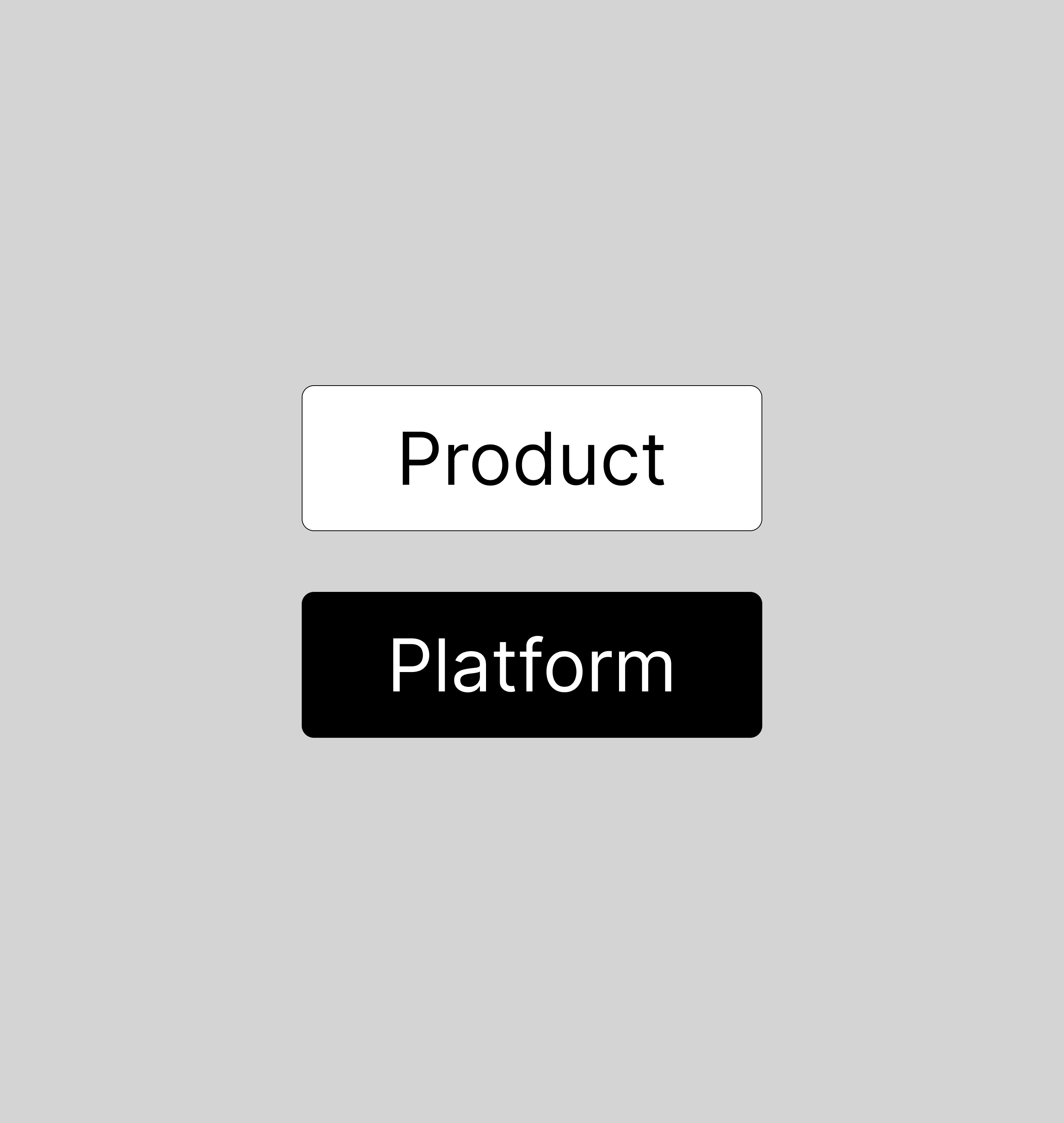2024
Product design / Data / Digital Products

Designing a platform requires a different mindset one that shifts from focusing on a self-contained product to developing a scalable, interconnected ecosystem. In this post, we’ll explore the challenges of transitioning from product to platform design and the principles that guide this shift.
Designing a digital platform takes complexity to a new level. Unlike a product, a platform is a foundation on which other products, services, and interactions are built. It’s about enabling an entire ecosystem where different users can connect, create value, and have their unique needs met.
Let’s take a look at the key mindset shifts required for product designers when faced with designing a platform:
When designing a digital product, we often map out a relatively fixed user journey, perhaps with some variations, but with an end goal that’s specific and linear. Platforms, however, invite multiple types of users, each with different intentions and needs.
Platform like Airbnb, you’re not just designing for travelers looking to book a stay, but also for hosts listing properties, and even for experiences providers. Each of these user groups has a different set of interactions with the platform.
The customer journey is now much more complex, with branching interactions based on who the user is, what role they play on the platform, and what they are trying to achieve.
As a product designer turning into a platform designer, you need to consider how these different paths cross, overlap, and impact each other. The design should support a multitude of non-linear pathways, much like we see in digital data products, but on an even broader scale.
A critical difference between designing a product vs platform is the emphasis on reusable components. In traditional product design, your design system may focus on a limited, well-defined set of use cases. But platforms are expansive and scalable by nature and have to support numerous unique, emergent scenarios. This calls for reusable components that can be leveraged in different contexts by different types of users.
For instance, consider the UI elements that a platform like Shopify might use across its interface. A component such as a pricing table or a “list your product” form needs to be flexible enough for individual sellers, large-scale businesses, or even developers integrating with Shopify’s API.
Creating reusable components means thinking modularly, each element should be versatile enough to meet the evolving needs of the platform and accommodate different configurations.
Designing with modularity is key to scalability, which is the lifeblood of any successful platform.
One of the most challenging aspects of platform design is accommodating a broad spectrum of user skill levels. Platforms bring together various user types, from those who may be new to digital experiences to highly advanced, technically skilled users.
A good platform should cater to all levels without alienating any group.
Scalability and adaptability are fundamental to successful platform design. Unlike a product, typically built for a specific set of users with defined needs, platforms must be inherently flexible, ready to accommodate new user groups, handle growing data volumes, and adapt to emerging requirements.
A great example of this is Slack, which demonstrates both scalability and adaptability. Slack seamlessly supports small teams just as effectively as large enterprises, each with unique structures and communication needs. Its adaptability shines in its ability to evolve from a simple messaging tool for small teams into a comprehensive communication hub for enterprises, featuring integrations, workflow automation, and advanced administrative controls.
From a design perspective, scalability means building modular, reusable components that can be adapted across various contexts. Adaptability involves anticipating growth patterns and designing flexibly to maintain a cohesive and intuitive user experience.
Effective platform design isn’t just about handling more users; it’s about scaling the value proposition as the user base grows. It should adapt to evolving needs, maintain usability, and support new features without compromising the core experience.
Designers must build robust systems that flexibly accommodate future changes while keeping the experience seamless.
The shift from designing digital products to digital platforms is more than just a change in scope, it’s a fundamental shift in mindset. It requires embracing complexity, modularity, and flexibility, while always keeping in mind the diverse user roles and experiences that a platform must support. The focus moves from solving isolated user problems to creating a thriving ecosystem that can accommodate growth and evolve with user needs.
By understanding these key differences and principles, product designers can effectively take on the challenges of platform design, building experiences that bring real value to interconnected user groups and fostering environments for scalable growth.
Have you experienced the shift from product to platform design? I’d love to hear about the challenges you faced and how you adapted your design process